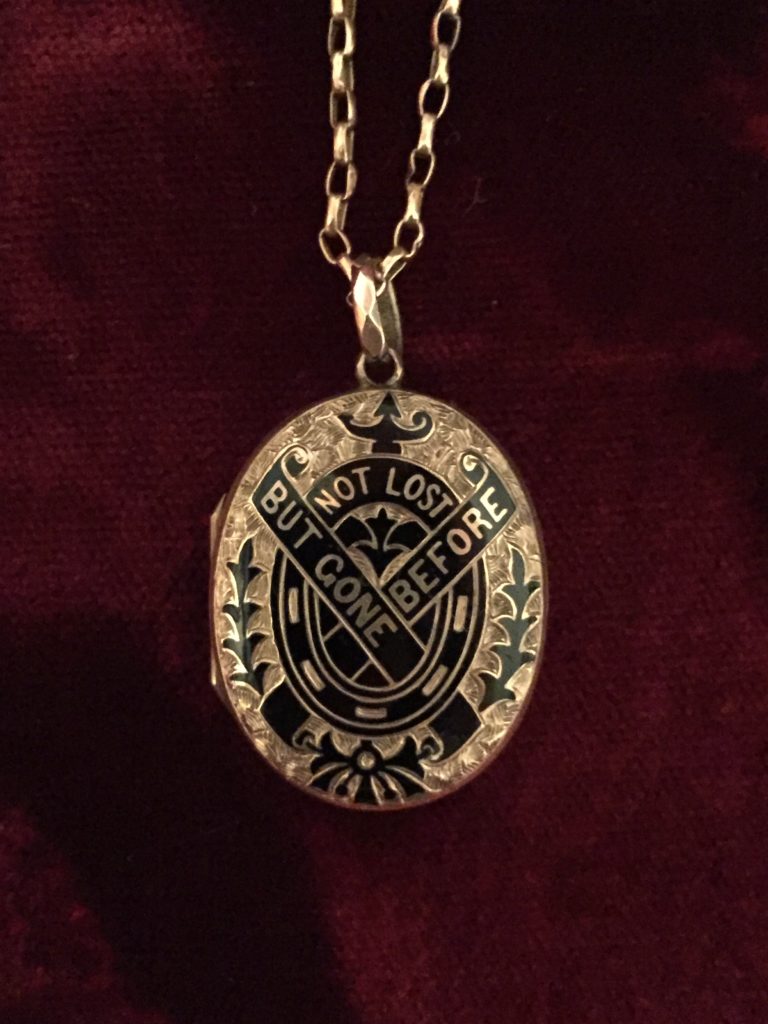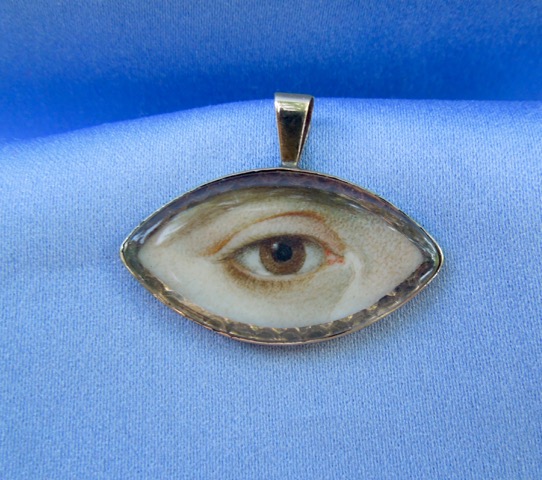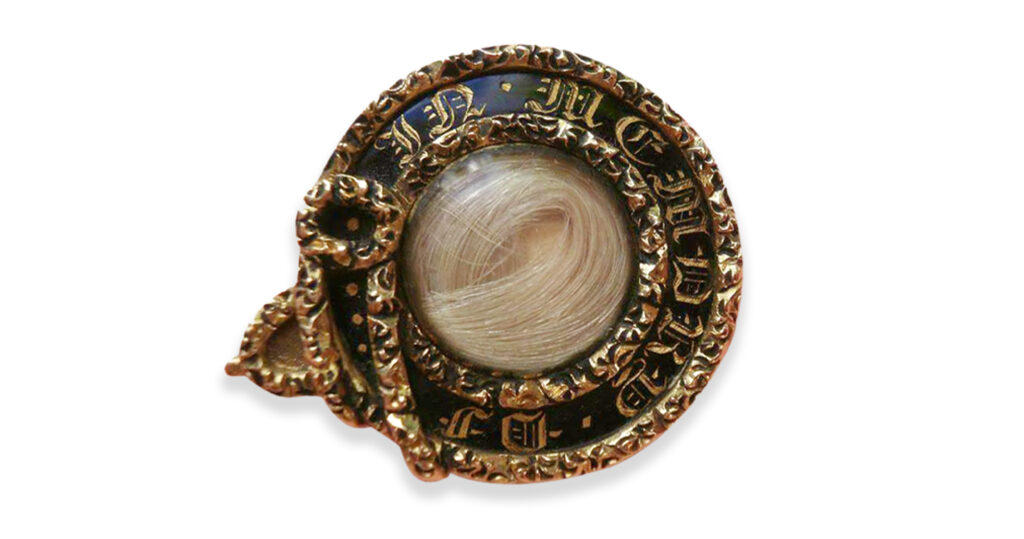A Crystal Heart
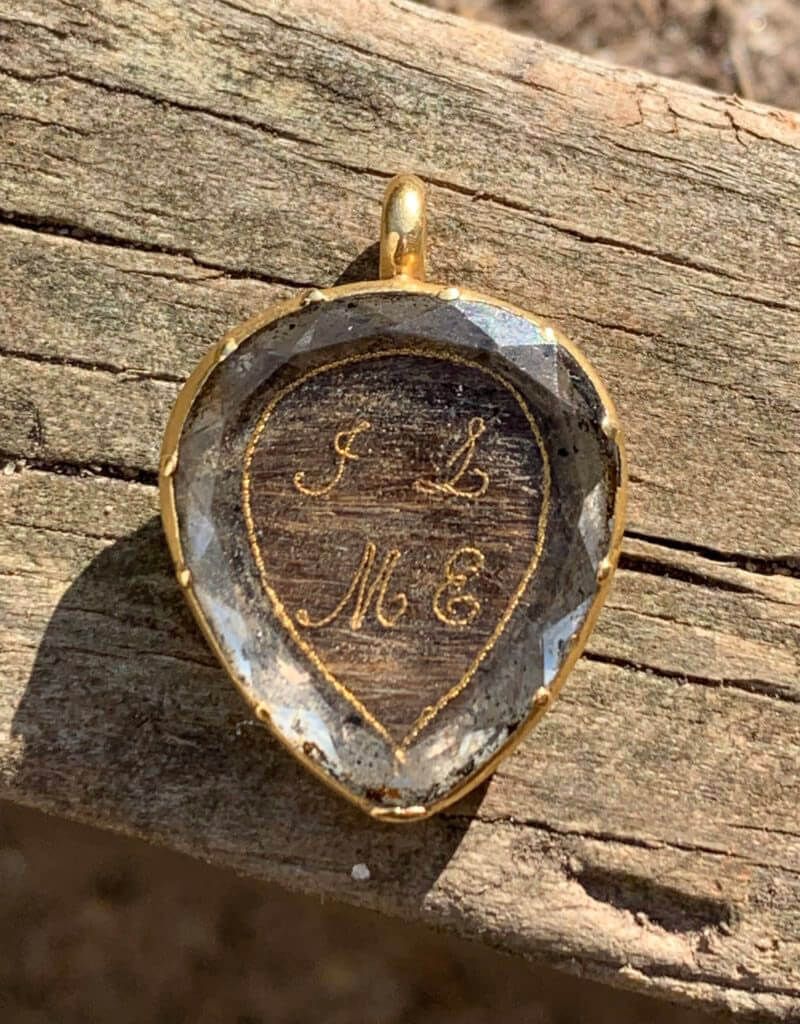
The heart is the most important element of focus in this pendant, as it is the first identifier for what the jewel represents for the wearer. Being seen from a distance when worn at the neck means that this pendant was clearly a statement of love and affection, which relates back to the relationship status of the wearer.

When the heart was worn for a loved one who was alive, it was a symbol of betrothal, marriage or love and affection, or if dead, grief for the departed. With the rise of cupid in sentimental jewels, the heart was a popular motif from the 17th to 19th century, but one which obviously resonates just as strongly today, as the production of heart-shaped pendants and lockets is still a popular design in jewellery. The heart has its origins in jewellery from the 15th century, but was enhanced in the 17th through the Enlightenment and the reflections of the humanist movement, but could also be appropriated for religious undertones when necessary.

If the heart is the centre of human emotion, its manifestation into the design of a jewel is the ultimate symbol of love. Sharing of the heart to another is a gift of a part of the soul. As can be seen by this late 17th/early 18th century jewel, the elements of the heart were quickly becoming adopted as the popular design in tokens of sentimentality.
Gold wire creates the cypher of the two people, placed on top of tightly woven hair. This design element was common for the day in sentimental and mourning jewels. It is the use of the faceted crystal, which makes this pendant a truely remarkable piece of history, as the use of crystal as a primary feature on these jewels peaked between 1650-1750. Rounder shapes were more common post c.1680, where this particular pendant seems to find its origin. This use of crystal is colloquially known as ‘Stuart Crystal’, as it was at its height during the House of Stuart in England.
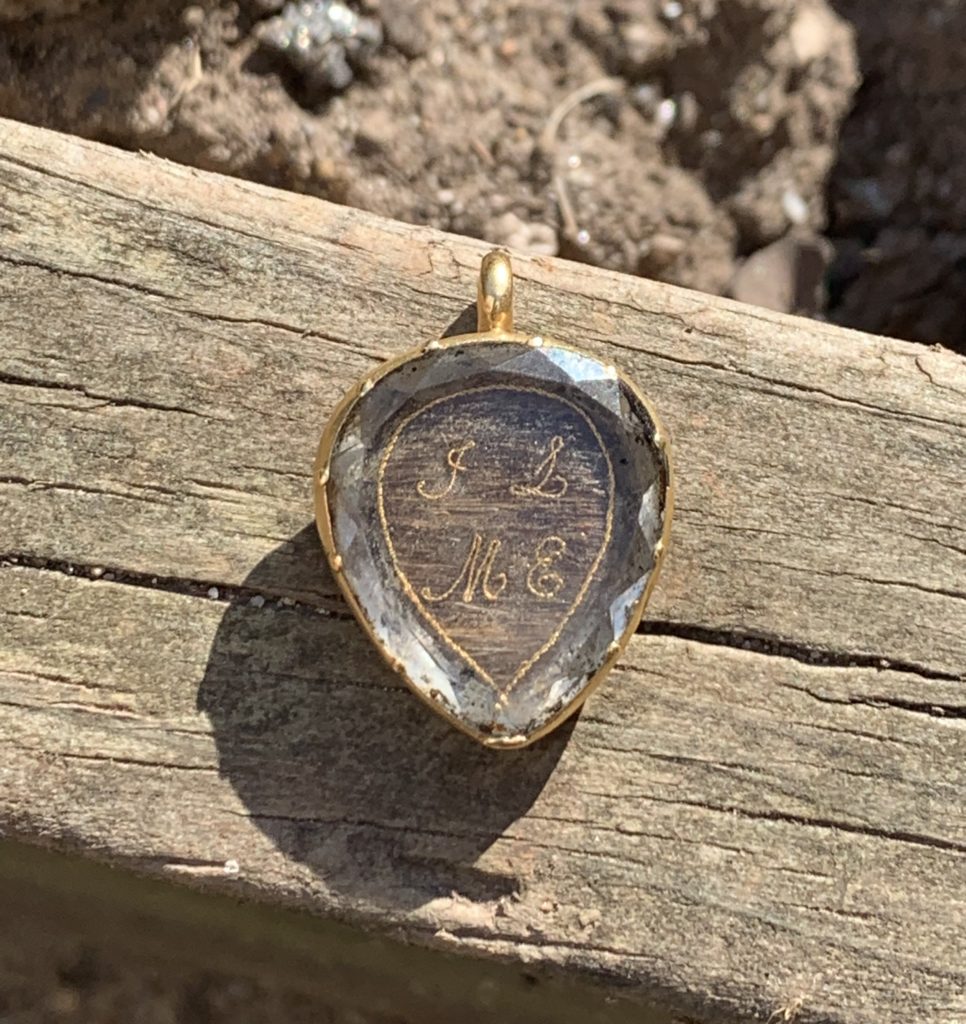
It is important to note that the heart shape which we understand today is still reflected in these jewels with the broad element of the shape. Upon viewing, the north of the pendant doesn’t have the sharp dovetail into the centre of the pendant, but rather curves around itself.
The familiar shape is seen at the south of the pendant, with the edges coming to the familiar shape of the heart that we recognise today. Elements of the heart shape had been perfected by the early 17th century, but the adaptation of the shape was common for sentimental jewels through the 18th and early 19th century, due to many other factors of the design flanking the shape and adding to its form.
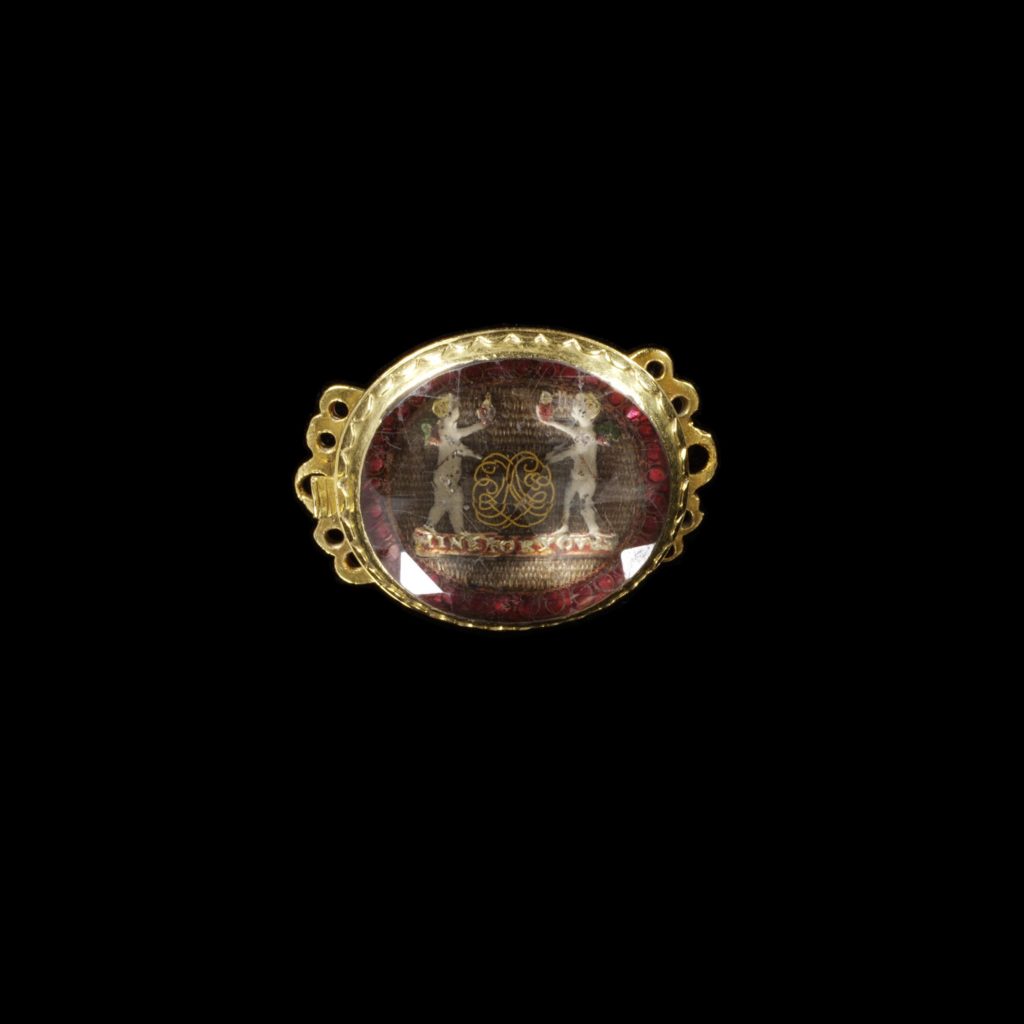
As written about extensively at Art of Mourning, the heart is one of the most important sentimental love symbols in early-modern history. Its obvious symbolism resonates today in tokens of love and affection, moving beyond religious and social values to be the most purely recognised understanding of love.

With an anthropomorphic design, the heart symbol became popular in the 17th century with its romantic undertones of giving ‘your’ heart to another. For more on the development of this symbol, please consult “Embellished Georgian Heart Love Pendant” and the following articles:
> Georgian Heart with Hairwork Twist in Crystal, 1824
> Three-Dimensional Urn Locket, Garnets, Pearls and Ribbon!
> Georgian Eye Miniature Inside a Pendant, c.1820
> Late Georgian Heart Pendant With Hairwork
> Rien Sans Amitie, Cabochon Garnet French Mourning Locket
> Merit Claims Esteem/Bow Heart Locket, 18th Century
> French Ribbon Pendant, 18th Century
> 18th Century Ribbon Motif Pendant
> An Eternity Knot in a Crystal Heart Pendant
> Mourning Crystal “Georgian” Heart
> Stuart Crystal Heart Pendant with Angels and Crown > Memento Mori Stuart Crystal Heart
> Diamond Navette Ring, Late 18th Century
> 18th Century Diamond Fede Ring
> Late Georgian Heart Pearl Pendant 19th Century
> The Hon Alice Nugent in a 1730 Mourning Locket and the Hairwork Eternity
> Is It, Or Isn’t It? Heart Pendant – First Impressions
Courtesy: KIL Jewelry NYC




